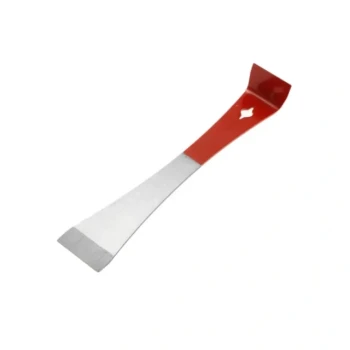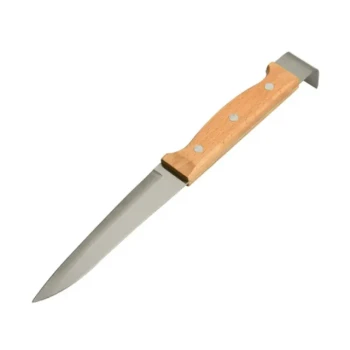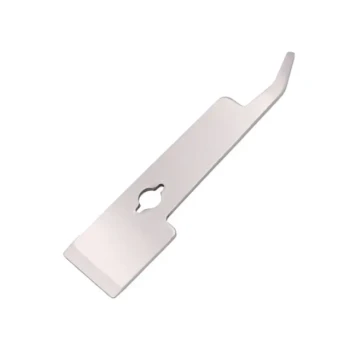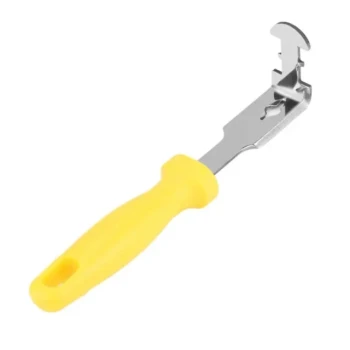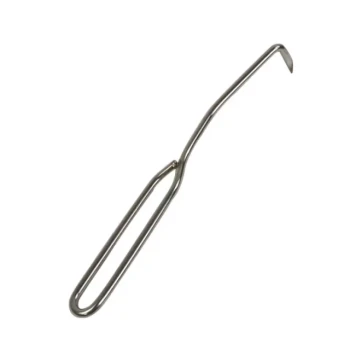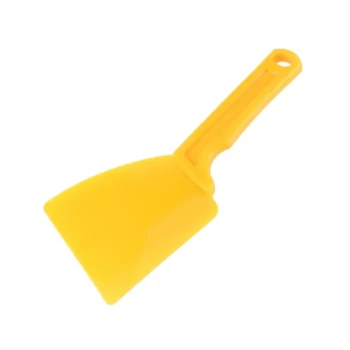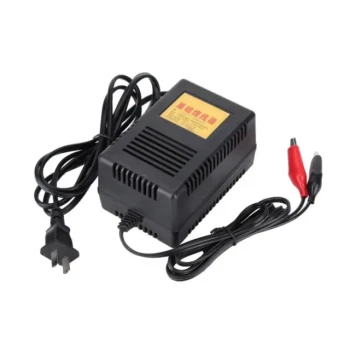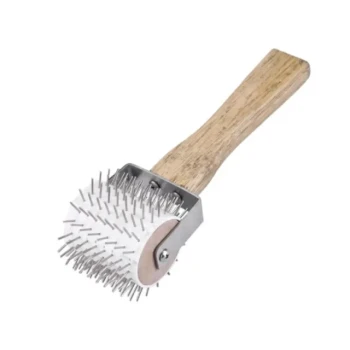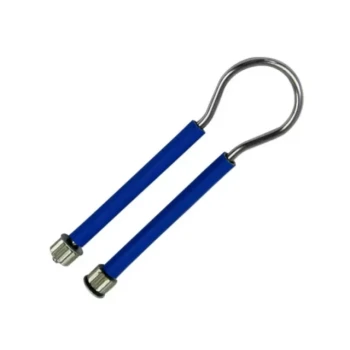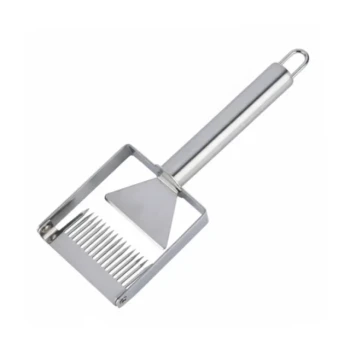To protect your colony, an entrance reducer is your first line of defense. This simple device physically blocks a range of pests, most notably rodents like mice and chipmunks that seek to nest in the hive during winter. It also makes the hive more defensible against larger predators such as skunks and raccoons, and insect robbers like wasps, by shrinking the area guard bees must patrol.
An entrance reducer's primary function is not just to physically block threats, but to shrink the "front door" of the hive. This allows a smaller guard force to effectively defend the colony against a wide range of opportunists, from large rodents to insect robbers.
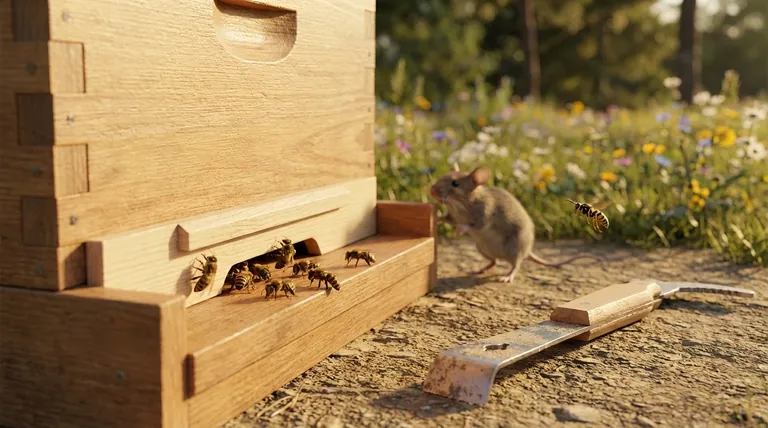
Why a Smaller Entrance is a Stronger Defense
Understanding the principle behind an entrance reducer is more important than just listing the pests it stops. The goal is to make your bees' defensive efforts more efficient.
The Principle of Defensible Space
Think of your hive entrance as a doorway. It is far easier to guard a single, narrow door than a wide, open garage bay.
By reducing the entrance size, you create a bottleneck. This concentrates the guard bees' efforts, allowing them to inspect, challenge, and repel intruders one by one.
Aiding a Growing Colony
A new or weakened colony has a smaller population and fewer bees to spare for guard duty.
An entrance reducer helps them conserve their workforce. With a smaller entrance to defend, more bees can focus on crucial internal tasks like nursing brood, building comb, and processing nectar.
Crucial for Winter Survival
During cold winter months, bees form a tight winter cluster to generate heat and survive. They are not actively patrolling the entrance.
A wide-open entrance is an invitation for mice and other rodents seeking a warm, food-rich place to build a nest. An entrance reducer with a small opening is the most effective way to prevent this common cause of winter colony loss.
Pests an Entrance Reducer Helps Control
The specific pests an entrance reducer deters are typically those seeking either shelter or an easy meal.
Rodents and Small Mammals
This is the most critical category of pest that a reducer physically blocks. Mice and chipmunks can devastate a hive, especially in winter.
They are notorious for destroying comb, consuming honey stores, and fouling the hive, often leading to the colony's death. The smallest opening on a reducer is specifically designed to be too small for a mouse to enter.
Larger Predators
Predators like raccoons, opossums, and skunks are opportunists. A reducer makes it much harder for them to reach in and grab frames or scoop out bees.
While it won't stop a determined attack, it is a significant deterrent. Some beekeepers even use special mesh reducers angled downwards, which expose a skunk's vulnerable underside to stings when it tries to scratch at the entrance.
Insect Robbers
Wasps, yellow jackets, and even robbing bees from other hives can be a major problem, especially in late summer when nectar is scarce.
A reduced entrance prevents these robbers from overwhelming the guard bees with a coordinated rush. It forces them into a single-file line where they can be systematically repelled.
Understanding the Trade-offs
An entrance reducer is a powerful tool, but it is not a "set it and forget it" solution. Its use must be balanced against the colony's other needs.
Reduced Ventilation
The most significant drawback is restricted airflow. In hot and humid weather, a small entrance can lead to overheating and prevent bees from effectively fanning moisture out of curing honey.
Potential for "Bearding"
A congested entrance can create a traffic jam, especially during a heavy nectar flow. This often causes bees to collect on the outside of the hive in a "beard," which reduces the foraging workforce and overall productivity.
Adjusting for Colony Strength
A reducer that is essential for a new colony of 10,000 bees will only hinder a booming hive of 60,000 bees. The entrance size must be appropriate for the colony's population and its ability to defend itself.
How to Use Your Entrance Reducer Effectively
The key is to adapt the entrance size to the season and the strength of your colony.
- If your primary focus is overwintering: Use the smallest possible opening to block mice completely while still allowing bees to exit for cleansing flights on warm days.
- If your primary focus is establishing a new colony: Start with a small to medium opening to help the small population defend itself from robbing insects.
- If your primary focus is managing a strong, mature hive in summer: You may be able to remove the reducer entirely to maximize ventilation and foraging traffic, but always monitor for robbing activity.
Ultimately, viewing the entrance reducer as an adjustable tool, not a permanent fixture, is the key to maintaining a secure and thriving hive.
Summary Table:
| Pest Type | Specific Pests | How the Reducer Helps |
|---|---|---|
| Rodents | Mice, Chipmunks | Physically blocks entry, crucial for winter survival. |
| Larger Predators | Raccoons, Skunks, Opossums | Creates a bottleneck, making it harder to attack. |
| Insect Robbers | Wasps, Yellow Jackets, Robber Bees | Slows entry, allowing guard bees to repel invaders. |
Secure your hives with professional-grade equipment from HONESTBEE.
Are you a commercial apiary or beekeeping equipment distributor looking for reliable, wholesale-priced supplies? Our entrance reducers and other essential tools are designed to help you manage colony health and productivity effectively.
Contact HONESTBEE today via our wholesale form to discuss your specific needs and discover how our solutions can protect your investment and support your beekeeping success.
Visual Guide
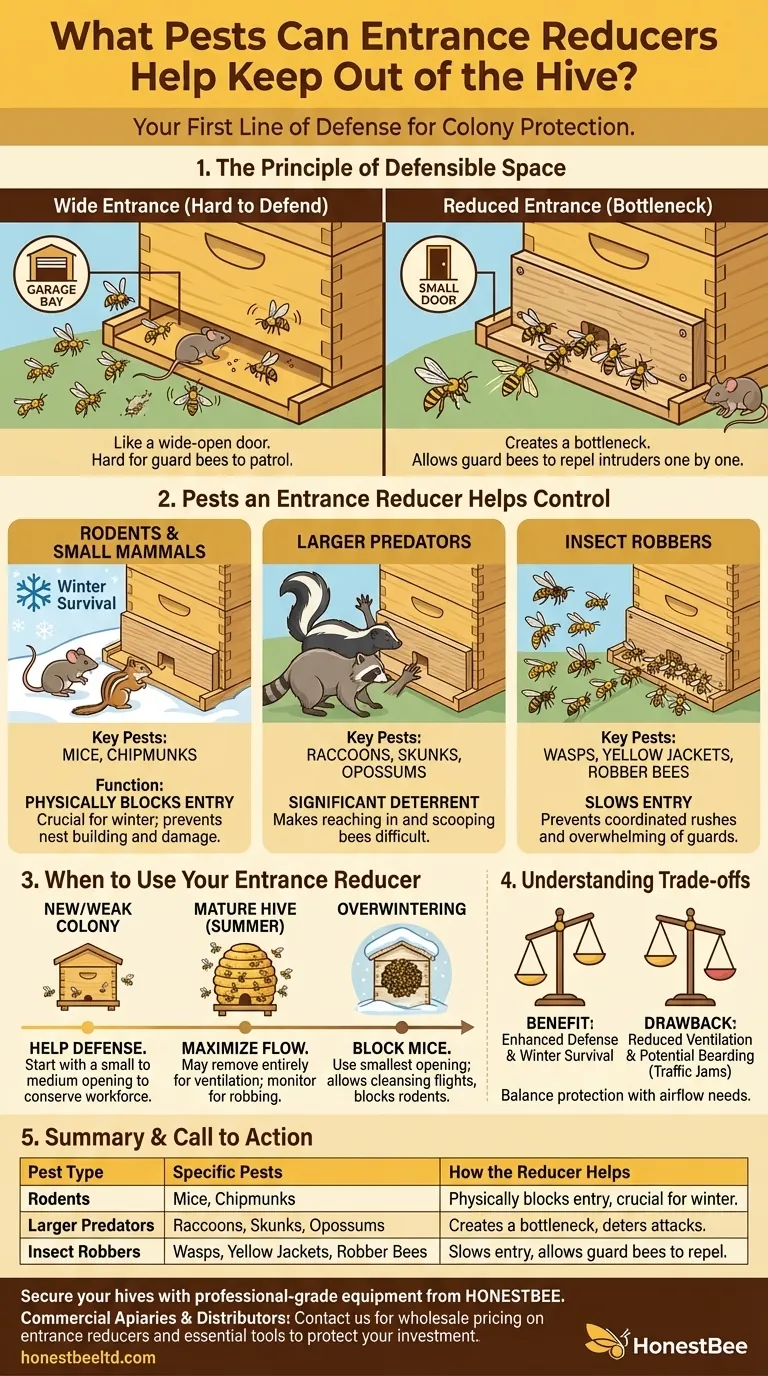
Related Products
- HONESTBEE Professional Multi-Functional Hive Tool with Ergonomic Wood Handle
- Multi-Function Plier-Style Frame Grip Hive Tool
- Professional Dual-End Stainless Steel Hive Tool for Beekeeping
- HONESTBEE Professional Long Handled Hive Tool with Precision Cutting Blade
- Professional Multi-Function Stainless Steel Hive Tool
People Also Ask
- What is the hole in a hive tool for? A Multi-Tool for Apiary Repairs and Maintenance
- What types of hive tools are available for beekeepers? Choose the Right Lever for Your Apiary
- What tools are useful when transferring frames from a nucleus hive? Ensure a Smooth and Low-Stress Move
- What safety precautions are advised for beekeeping with hive tools? Master Safe Handling for Calm, Efficient Hives
- What should beginners consider when purchasing beekeeping equipment? A Guide to Essential Starter Gear






